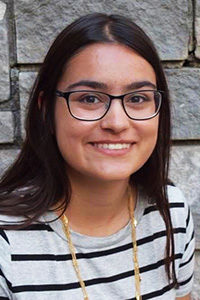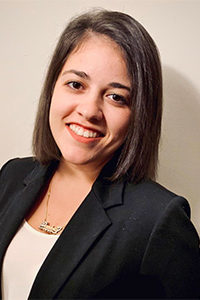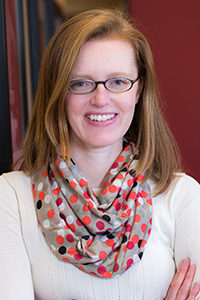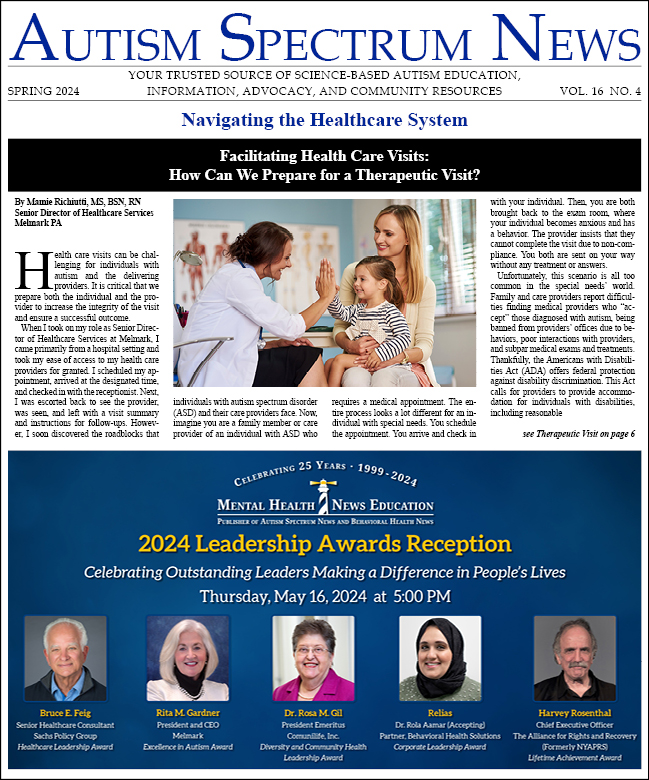Sibling relationships are some of the longest that people will have in their lifetime, and these relationships can significantly influence sibling development (McHale, Updegraff, & Whiteman, 2012). While each sibling relationship is different, they are commonly characterized by shared experiences and intimacy (Dunn, 2002). The sibling connection can be particularly unique and complex when one or more of the siblings is diagnosed with autism spectrum disorder (ASD).
When asked to reflect on their childhood relationships with their siblings with ASD, adult siblings—like siblings of neurotypical individuals—report both positive and negative feelings, though the context for these feelings can be quite different from that of neurotypical sibling relationships. Negative feelings toward a brother or sister with ASD are often associated with the impact of autism on their lives, such as sadness or frustration about limited reciprocity in the relationship, or a sense of loss of a typical sibling relationship (Tozer, Atkin, & Wenham, 2013). However, siblings also report great admiration for their siblings and less competition in their relationships (Kaminsky & Dewey, 2001), as well as feeling protective of their siblings (Tozer et al., 2013).
All sibling relationships can change across the lifespan. Sibling relationships in adulthood become more voluntary as each sibling grows independent of their families by pursuing higher education or beginning careers, or even by starting their own families. For siblings of individuals with ASD, these milestones can be especially monumental. Many adult siblings report that, as children or adolescents, they assumed more responsibility, care, and support for their brother or sister than did siblings who did not have a brother or sister on the spectrum (Bigby, 1997). Shifting away from this role may give young adult siblings the opportunity to develop an identity separate from their family. However, siblings may also experience stress and concern about their family’s well-being and future. It is common for young adults to consider the type of role they will assume in the lives of their siblings with ASD once their parents become too old to care for them (Bowey & McGlaughlin, 2007). Some young adult siblings feel a desire or sense of obligation to remain in close proximity to their family and be involved in the care of their sibling even after moving out and starting college or a career (Atkin & Tozer, 2014; Tozer et al., 2013), but they may struggle to balance this connection with new roles and responsibilities. Similarly, siblings who are physically distanced may work to maintain their connection with their brother or sister across the miles.
As young adult siblings live more independently from each other, it often becomes more difficult to connect. Even if siblings remain in close proximity, fostering and maintaining social connection with the sibling(s) with ASD can be a challenge. As deficits in social communication are a core symptom of ASD (American Psychiatric Association, 2013), siblings may struggle to understand the other’s approach to social interaction. This challenge is especially pronounced when the sibling with ASD is unable to communicate using speech (Travers, Carlton, & Carter, 2020). Identifying ways to connect with a sibling with ASD despite living separately is paramount to maintaining the desired relationship. The following are some ways that young adults can maintain social connections with their sibling(s) with ASD:
Evaluate Current Knowledge About ASD and One’s Sibling with ASD
ASD looks different in every individual. It can be beneficial for a sibling to identify what they already know about their sibling with ASD and whether anything is still unclear. Siblings who are more knowledgeable about ASD report having more positive relationships with their siblings with ASD (Roeyers & Mycke, 1995). Some resources that may provide helpful information are the sibling’s treatment provider, informational websites, a caregiver, or siblings themselves. Sibling support groups have also been shown to improve siblings’ knowledge about ASD as well as foster positive interactions among siblings (e.g., Evans, Jones, & Mansell, 2001). One can find in-person support groups through websites (e.g., Autism Sibling Support Meetup) or obtain support virtually (e.g., Facebook Groups, MyAutismTeam).
Join Them in Activities They Love
Siblings of individuals with ASD typically spend less time with their brother or sister than do siblings of individuals with Down syndrome or neurotypical siblings (Knott, Lewis, & Williams, 1995). Engaging in activities with a sibling with ASD enjoys can be a great way to spend time together, especially if they do not prefer or are unable to converse. Many siblings report watching television together as a way to connect (Travers et al., 2020); other activities may include playing video games, spending time outside, or introducing the sibling to a new hobby they might enjoy. For siblings who can go into the community, commonly reported activities include shopping at the mall, going to concerts, and spending time with each other’s friends (Travers et al., 2020).
Use Technology to Connect
As siblings age, it can be more difficult to spend time together in person, as adults may live independently and/or have busy schedules. Technology can be a helpful way to maintain connections from a distance. Many siblings report talking with their siblings with ASD on the phone (Travers et al., 2020); however, for those with siblings who do not use speech to communicate, texting, emailing, or video may be more feasible methods of communication. These modalities may also be more comfortable or preferred for siblings who do use speech. Individuals who communicate with other family members through these means can see if their siblings with ASD can join the conversation, even if only for a few minutes. Some technology platforms may also allow siblings to join in activities together remotely, such as by playing video games together on an internet server or watching a favorite movie together using a streaming service’s “watch party” feature.
Regardless of family dynamics and circumstances, social connectedness among siblings when one or more siblings has autism is unique and challenging, especially with the new freedom that accompanies young adulthood. Each sibling relationship is unique, and the extent to which these recommendations may apply will vary across families. Studies have found that siblings who spend more time together report more positive relationships (Travers et al., 2020), and positive social relationships are often associated with increased psychological functioning and well-being (Seligman, 2018). Building and maintaining these relationships may be challenging at times but can provide many benefits for both neurotypical siblings and their siblings with ASD.
Amanda Austin, BA, is a School Psychology Doctoral Student at Rutgers University-New Brunswick. Daniela Silva, MS, BCBA, is a Research Coordinator; Caitlin Chambers, MEd, BCBA, is a Classroom Assistant; and Kate Fiske, PhD, BCBA-D, is Director of Family Support Services and Director of Academic Training at the Douglass Developmental Disabilities Center, Rutgers University-New Brunswick. Dr. Fiske is also a Clinical Associate Professor at Rutgers University-New Brunswick.
References
American Psychiatric Association. (2013). Diagnostic and statistical manual of mental disorders (5th ed.). Washington, DC: Author.
Atkin, K., & Tozer, R. (2014). Personalisation, family relationships, and autism: Conceptualising the role of adult siblings. Journal of Social Work, 14(3), 225-242.
Bigby, C. (1997). Parental substitutes? The role of siblings in the lives of older people with intellectual disability. Journal of Gerontological Social Work, 29, 3– 21.
Bowey, L., & McGlaughlin, A. (2007). Older carers of people with learning disabilities confront the future: Issues and preferences in future planning. British Journal of Social Work, 31(1), 39-54.
Dunn, J. (2002). Sibling relationships. In P. K. Smith & C. H. Hart (Eds.) Blackwell Handbook of Childhood Social Development (pp. 223-237). Hoboken, NJ: Wiley-Blackwell.
Evans, J., Jones, J., & Mansell, I. (2001). Supporting siblings: Evaluation of support groups for brothers and sisters of children with learning disabilities and challenging behaviour. Journal of Learning Disabilities, 5(1), 69-78.
Kaminsky, L., & Dewey, D. (2001). Siblings relationships of children with autism. Journal of Autism and Developmental Disorders, 31, 399-410.
Knott, F., Lewis, C., & Williams, T. (2007). Sibling interaction of children with autism: Development over 12 months. Journal of Autism and Developmental Disorders, 37, 1987-1995.
McHale, S. M., Updegraff, K. A., & Whiteman, S. D. (2012). Sibling relationships and influences in childhood and adolescence. Journal of Marriage and Family, 74, 913-930.
Roeyers, H., & Mycke, K. (1995). Siblings of a child with autism, with mental retardation, and with a normal development. Child: Care, Health and Development, 21, 305–319.
Seligman, M. (2018). PERMA and the building blocks of well-being. The Journal of Positive Psychology, 13(4), 333-335.
Tozer, R., Atkin, K., & Wenham, A. (2013). Continuity, commitment and context: Adult siblings of people with autism plus learning disability. Health & social care in the community, 21(5), 480-488.
Travers, H. E., Carlton, M. E., Carter, E. W. (2020). Social connections among siblings with and without intellectual disability or autism. Intellectual and Developmental Disabilities, 58(1), 19-33.








